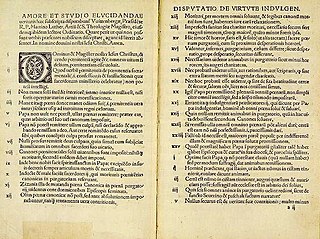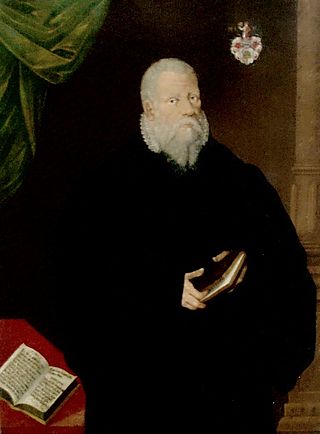This article needs additional citations for verification .(April 2019) |
| Von nun ab, Herr Kunze | |
|---|---|
| Directed by | Gottfried Kolditz |
Release date |
|
| Country | East Germany |
| Language | German |
Von nun ab, Herr Kunze is an East German film. It was released in 1956.
This article needs additional citations for verification .(April 2019) |
| Von nun ab, Herr Kunze | |
|---|---|
| Directed by | Gottfried Kolditz |
Release date |
|
| Country | East Germany |
| Language | German |
Von nun ab, Herr Kunze is an East German film. It was released in 1956.
The Bach-Werke-Verzeichnis is a catalogue of compositions by Johann Sebastian Bach. It was first published in 1950, edited by Wolfgang Schmieder. The catalogue's second edition appeared in 1990. An abbreviated version of that second edition, known as BWV2a, was published in 1998.
Chorale fantasia is a type of large composition based on a chorale melody, both works for organ, and vocal settings, for example the opening movements of Bach's chorale cantatas, with the chorale melody as a cantus firmus.

Gott, man lobet dich in der Stille, BWV 120.1, is a sacred cantata by Johann Sebastian Bach. He composed it in Leipzig for the occasion of Ratswechsel, the inauguration of a new town council in a church service, probably before 1730. Parts of the cantata appeared in a wedding cantata and a cantata commemorating the Augsburg Confession in 1730. Bach reworked the choral second movement for the Symbolum Nicenum of his Mass in B minor.

Johann Sebastian Bach composed the church cantata Gott der Herr ist Sonn und Schild, BWV 79, in Leipzig in 1725, his third year as Thomaskantor, for Reformation Day and led the first performance on 31 October 1725.

Ludwig Helmbold, also spelled Ludwig Heimbold, was a poet of Lutheran hymns. He is probably best known for his hymn "Nun laßt uns Gott dem Herren", of which J. S. Bach used the fifth stanza for his cantata O heilges Geist- und Wasserbad, BWV 165; Bach also used his words in BWV 73, 79 and 186a.

Elisabeth Cruciger, a German writer, was the first female poet and hymnwriter of the Protestant Reformation and a friend of Martin Luther.
Gottfried Kolditz was a German movie actor and director.
There are 52 chorale cantatas by Johann Sebastian Bach surviving in at least one complete version. Around 40 of these were composed during his second year as Thomaskantor in Leipzig, which started after Trinity Sunday 4 June 1724, and form the backbone of his chorale cantata cycle. The eldest known cantata by Bach, an early version of Christ lag in Todes Banden, BWV 4, presumably written in 1707, was a chorale cantata. The last chorale cantata he wrote in his second year in Leipzig was Wie schön leuchtet der Morgenstern, BWV 1, first performed on Palm Sunday, 25 March 1725. In the ten years after that he wrote at least a dozen further chorale cantatas and other cantatas that were added to his chorale cantata cycle.

"Herr Christ, der einig Gotts Sohn" is a Lutheran hymn by Elisabeth Cruciger. Printed in 1524 in the Erfurt Enchiridion, together with 18 hymns by Martin Luther, it is one of the oldest Lutheran hymns. The text combines Lutheran teaching with medieval mysticism. It has been the basis of musical settings such as Bach's chorale cantata Herr Christ, der einge Gottessohn, BWV 96.

Georg Weissel was a German Lutheran minister and hymn writer.
The Tower is a 2012 German TV drama film based on the eponymous 2008 novel by Uwe Tellkamp. It is about life and history in Dresden between 1982 and 1989 in the German Democratic Republic, GDR and its last years before demonstrations, the time of Die Wende, the tearing down of the wall and before German reunification.

Der Graf von Gleichen D 918 is an unfinished 1827 opera in two acts by Franz Schubert after a libretto by Eduard Bauernfeld.
Georg Thurmair was a German poet who wrote around 300 hymns, a writer, journalist and author of documentary films.

"In dich hab ich gehoffet, Herr" is a Lutheran hymn in seven stanzas, written by Adam Reusner and first published in 1533. He paraphrased the beginning of Psalm 31. It was first sung to the melody of a Passion hymn. The melody connected with the hymn in 1560 was derived from models dating back to the 14th century. A third melody from 1608 became a hymn tune for several other songs and translations to English. In the German Protestant hymnal Evangelisches Gesangbuch, the hymn appears as EG 257 with the second melody. Johann Sebastian Bach used the second and third melodies in chorale preludes, and the third also in cantatas and the St Matthew Passion.

"Nun lasst uns Gott dem Herren" is a Lutheran hymn of 1575 with words by Ludwig Helmbold. It is a song of thanks, with the incipit: "Nun lasst uns Gott dem Herren Dank sagen und ihn ehren". The melody, Zahn No. 159, was published by Nikolaus Selnecker in 1587. The song appears in modern German hymnals, including in the Protestant Evangelisches Gesangbuch as EG 320.
"Nun liebe Seel, nun ist es Zeit", alternatively written "Nun, liebe Seel, nun ist es Zeit", is a Lutheran hymn for Epiphany, in five stanzas of six lines each, by Georg Weissel. It was first printed in 1642, set as a motet by Johannes Eccard. A version with an additional stanza is attributed to Johann Christoph Arnschwanger.